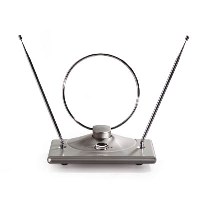I admit it, I stayed up until midnight last night to watch all the analog TV signals go off the air. WTVP had a short countdown just before midnight that said, “after 37 years” on their analog frequency, they were shutting down “in just a few moments,” but that programming would continue on 47.1, 47.2, and 47.3. Once the countdown hit 0, the signal was gone. Nothing but snow.
When I went to WMBD (31), they were already off the air. WYZZ (43) and WEEK (25) ceased regular programming, but kept their transmitter on to broadcast a public service announcement loop on how to make the conversion to digital television. WHOI (19) did not go off the air yet, opting to keep their analog signal on until the extended cutoff date in June.
There’s no question that the quality of picture and audio is far superior on digital television. The only thing I will miss is the ability to pull in weak signals of television stations from other cities. For instance, I could get an analog signal from channel 8 in the Quad Cities and channels 12 and 17 from Urbana and Decatur, respectively. They were a little snowy, but could still be watched. I cannot get the digital signals from these stations. Not a big deal; just a little something I’ll miss. When I was a little kid, I remember getting a snowy picture of channel 55 out of Springfield, and once — just once, on a freak night — channel 44 out of Chicago.
Farewell, analog. Welcome, digital. I’m looking forward to seeing the St. Louis Cardinals win the World Series in beautiful high-definition glory!

 Anyone else watched the independent film
Anyone else watched the independent film  For those who still use rabbit ears to get their TV signals, here’s a worrisome press release from the market-research firm
For those who still use rabbit ears to get their TV signals, here’s a worrisome press release from the market-research firm  On June 30 last year, the
On June 30 last year, the 